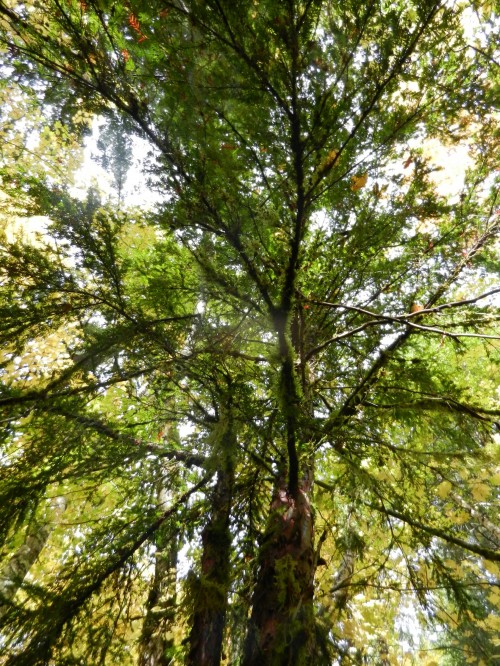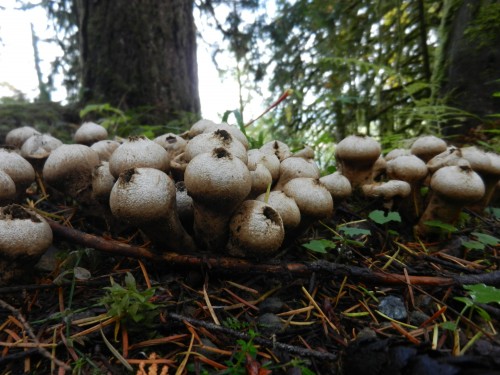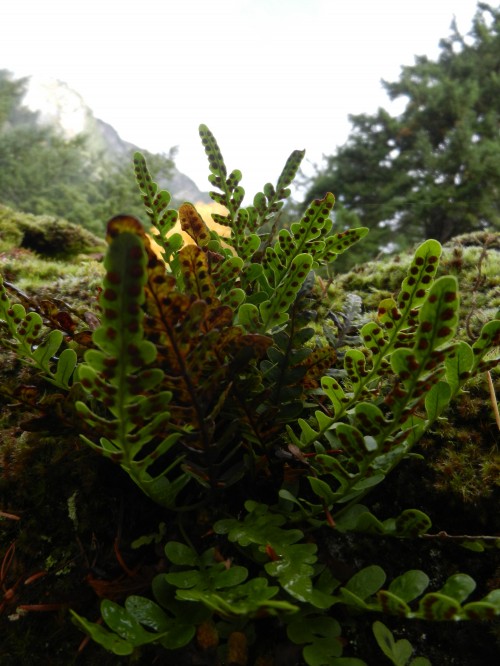Naming as Knowing
 Practicing natural history requires us to be consciously aware, to be intentional observers of our surroundings. To be a naturalist involves surrendering what we know about a place in order to learn from it. Slowly we will make notes of patterns and similarities, notes of how things are connected and how and when these connections occur. When we become familiar with a place, that familiarity is grounded in our first efforts to identify and name individual pieces of the landscape.
Practicing natural history requires us to be consciously aware, to be intentional observers of our surroundings. To be a naturalist involves surrendering what we know about a place in order to learn from it. Slowly we will make notes of patterns and similarities, notes of how things are connected and how and when these connections occur. When we become familiar with a place, that familiarity is grounded in our first efforts to identify and name individual pieces of the landscape.
In my dalliances so far into the naturalist world and into the North Cascades, I have made attempts to name what I see, collect these pieces as parts of a whole, and better understand this place as my home. Learning and pulling from the experiences of the naturalists of our community is a special part of the M.Ed. Graduate Residency at North Cascades Institute I have been inspired by words and experiences about what it means to identify something by name, to understand the patterns of place, to see the connection between recognition and reverence, and to cultivate that curiosity that pulls us more deeply into relationships with the places we call home. Here are some thoughts I’ve gleaned and some experiences I’ll share about the art of naming in the practice of natural history.
Naming is a small step towards gaining a broader understanding of a landscape. After learning to pick out just one bird song from the morning chorus, the daily routine will never be the same our ears subconsciously listen for those notes of recognition, saying white-breasted nuthatch when the first “yank” of its call makes its way to us our ears from the forest. For many naturalists, naming is the progression of observation and the predecessor of understanding. While keying out plants in the Methow Valley with the rest of my graduate cohort at the beginning of October, naturalist Dana Vasali noted that, “Naming allows you to see, to pick things out in the landscape, acknowledging that recognition is the starting point for learning about your surroundings. Picking out an individual plant or animal in the vast, green landscape of the North Cascades also allows us to start seeing patterns and similarities in our world, slowly putting us on a path towards understanding the interconnections of this place in a larger context.”

Mushrooms along the East Bank Trail of Baker Lake.
Taking the time to call nature by name is a simple act of reverence. Because investing in the knowledge of a place is to become a stakeholder in its future, naming and knowing pieces of your landscape become the building blocks for stewardship. North Cascades Institute Executive Director Saul Weisberg writes, “Knowing a name is the beginning of respect. I believe it is harder to harm something once you have spoken its name,” in his piece from Impressions of the North Cascades. Saul goes on to say that naming pulls us more intimately into contact with the natural world by forcing us to pay closer attention to our surroundings. I felt this sentiment deeply after moving to the North Cascades this summer, my obsession with identifying wildflowers was my way of becoming a part of my new ecosystem. Saying hello and collecting the names of the season’s flowers was a way to introduce myself to this place as I transitioned to calling it home. It seems that learning about the native population places us in a better position for ourselves to also begin to become native. To be part of a place we must know it and to know it we must call out to our neighbors by name, acknowledging our mutual connection to the land.
To name is not necessarily to know. Perhaps attaching a name to a newly learned species too quickly blurs the naturalist’s ability to be a naturalist at the core of what that word means; to skip the steps of deep observation when it becomes easy to connect a one or two word name to the shape, smell, color, texture of a species might be missing the point. Lee Whitford of M.Ed. Graduate Cohort 4 is a guest instructor for mushroom classes at the North Cascades Institute, and is adamant that identifying fungus to species is not necessarily the key to knowing it. She encourages students to make observations, to note distinct characteristics of specimens, and relate them back to what they already know about a place. Lee’s naturalist philosophy is also rooted in the keen paying attention that is shared by both Dana and Saul, but she also wants to honor the intimacy of holding, working with, and introducing yourself to a specimen just as much as being able to decipher its taxonomic origin. With Lee I learned that although we might be able to name parts of our landscape, it is important to challenge ourselves to flesh out that name, go back to the individual, and work with the most basic component of acknowledgement, simply to observe. This type of observation taps us into our naturalist inclinations and initiates in us the curiosity to look more closely. Naming then builds from this place in order to bring us to a deeper understanding of both organism and ecosystem.

Licorice fern, Polypodium glycyrrhiza, on the Diablo East Trail at the Environmental Learning Center.
No matter how we connect, identify, name, or learn about place, it is important that we do. It is important that we use our initial sense of curiosity that prompts us to name a licorice fern in the forest to draw us into a mindset of seeing the world as both human and natural. Naming is the starting point to a life of letting nature become both a teacher and an inspiration. Author Robert Michael Pyle describes his relationship to nature perfectly: “I thirst to know them all, not just their names, but something of their lives.”

